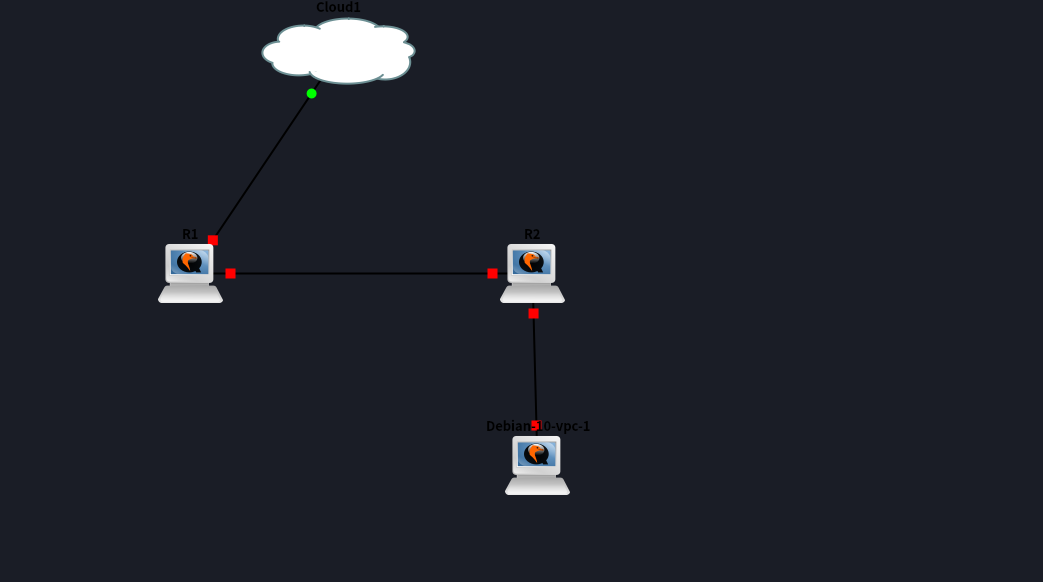NAT66(NPTv6)¶
NPTv6 is an address translation technology basedon IPv6 networks, used to convert an IPv6 address prefix in an IPv6 message into another IPv6address prefix. We call this address translation method NAT66. Devices that support the NAT66 function are called NAT66 devices, which can provide NAT66 source and destination address translation functions.
Overview¶
Different NAT Types¶
SNAT66¶
SNPTv6 The conversion function is mainly used in the following scenarios:
A single internal network and external network. Use the NAT66 device to connect a single internal network and public network, and the hosts in the internal network use IPv6 address prefixes that only support routing within the local range. When a host in the internal network accesses the external network, the source IPv6 address prefix in the message will be converted into a global unicast IPv6 address prefix by the NAT66 device.
Redundancy and load sharing. There are multiple NAT66 devices at the edge of an IPv6 network to another IPv6 network. The path through the NAT66 device to another IPv6 network forms an equivalent route, and traffic can be load-shared on these NAT66 devices. In this case, you can configure the same source address translation rules on these NAT66 devices, so that any NAT66 device can handle IPv6 traffic between different sites.
Multi-homed. In a multi-homed network environment, the NAT66 device connects to an internal network and simultaneously connects to different external networks. Address translation can be configured on each external network side interface of the NAT66 device to convert the same internal network address into different external network addresses, and realize the mapping of the same internal address to multiple external addresses.
DNAT66¶
The DNPTv6 destination address translation function is used in scenarios where the server in the internal network provides services to the external network, such as providing Web services or FTP services to the external network. By configuring the mapping relationship between the internal server address and the external network address on the external network side interface of the NAT66 device, external network users can access the internal network server through the designated external network address.
Prefix Conversion¶
Source Prefix¶
Every SNAT66 rule has a translation command defined. The prefix defined for the translation is the prefix used when the address information in a packet is replaced.、
The SNAT66 rule replaces the source address of the packet and calculates the converted address using the prefix specified in the rule.
Example:
Convert the address prefix of a single fc01::/64 network to fc00::/64
Output from eth0 network interface
set nat66 source rule 1 outbound-interface 'eth0'
set nat66 source rule 1 source prefix 'fc01::/64'
set nat66 source rule 1 translation address 'fc00::/64'
Destination Prefix¶
For the DNAT66 rule, the destination address of the packet isreplaced by the address calculated from the specified address or prefix in the translation address command
Example:
Convert the address prefix of a single fc00::/64 network to fc01::/64
Input from eth0 network interface
set nat66 destination rule 1 inbound-interface 'eth0'
set nat66 destination rule 1 destination address 'fc00::/64'
set nat66 destination rule 1 translation address 'fc01::/64'
Configuration Examples¶
Use the following topology to build a nat66 based isolated network between internal and external networks (dynamic prefix is not supported):

R1:
set interfaces ethernet eth0 ipv6 address autoconf
set interfaces ethernet eth1 address 'fc01::1/64'
set nat66 destination rule 1 destination address 'fc00:470:f1cd:101::/64'
set nat66 destination rule 1 inbound-interface 'eth0'
set nat66 destination rule 1 translation address 'fc01::/64'
set nat66 source rule 1 outbound-interface 'eth0'
set nat66 source rule 1 source prefix 'fc01::/64'
set nat66 source rule 1 translation address 'fc00:470:f1cd:101::/64'
R2:
set interfaces bridge br1 address 'fc01::2/64'
set interfaces bridge br1 member interface eth0
set interfaces bridge br1 member interface eth1
set protocols static route6 ::/0 next-hop fc01::1
set service router-advert interface br1 prefix ::/0